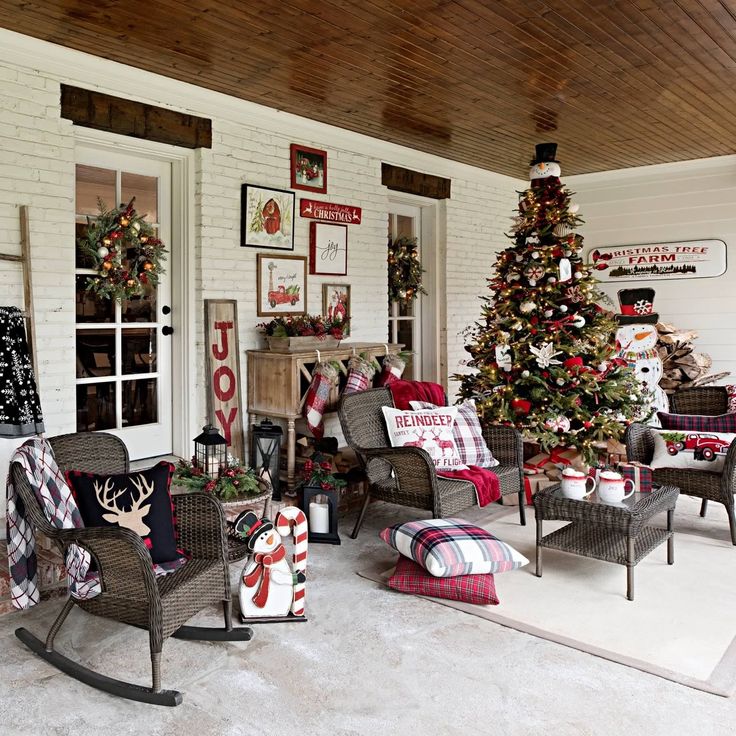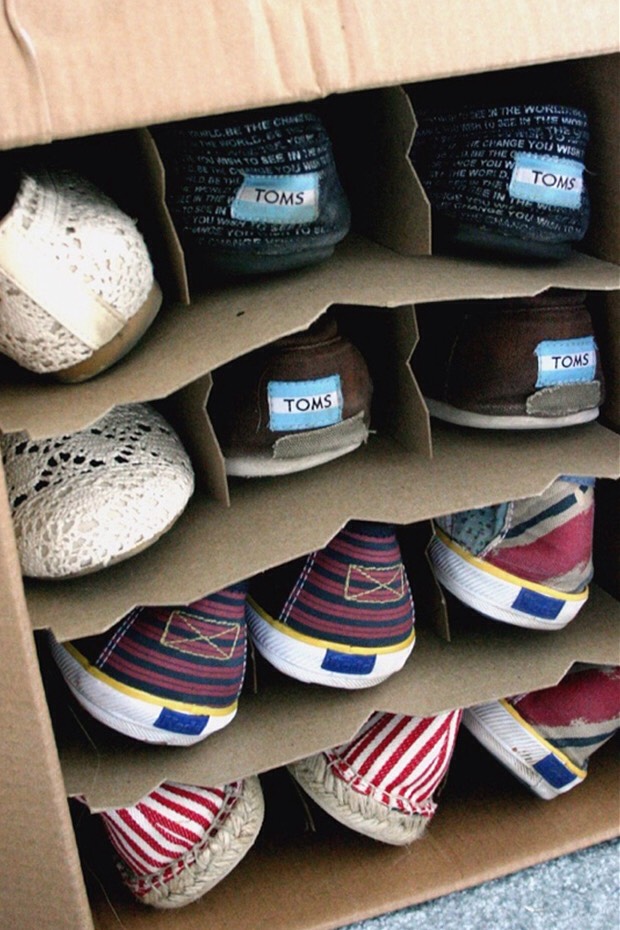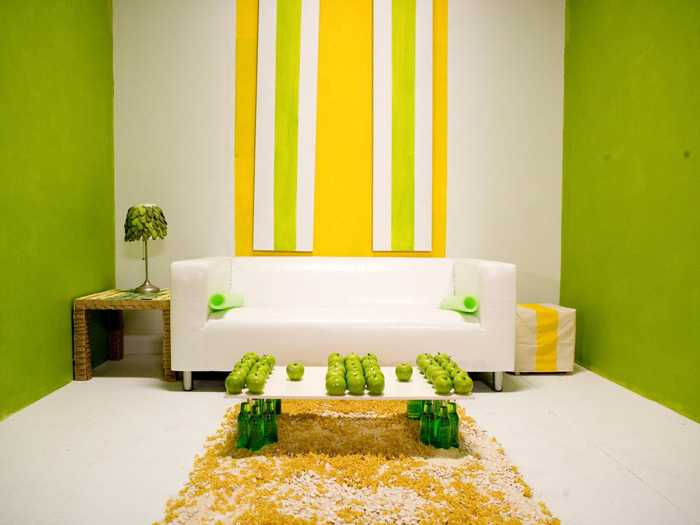This sparks joy
“Does It Spark Joy?” Is the Wrong Decluttering Question
When decluttering expert Marie Kondo published her ground-breaking book, The Life-Changing Magic of Tidying Up, hordes of grateful, stuff-encumbered readers around the world seized particularly on her question “Does it spark joy?”
That was the criterion Kondo proposed for deciding whether to keep something. Does an item in your possession give you a little thrill when you hold it in your hands? If so, hang on to it. If not, then So long, mustard-colored cardigan with the leather buttons.
Suddenly, it seemed like everyone who was flirting with the notion of decluttering their homes began talking about joy-sparks. Surely, in Kondo’s simple question was the razor to slice through indecision about what to keep and what to toss when pursuing a simpler lifestyle.
End of story. Or is it?
Let me begin by saying that, to me, any voice calling us to own fewer possessions is a welcome voice.
In America, we consume twice as many material goods as we used to 50 years ago. Over the same period, the size of the average American home has nearly tripled, and today that average home contains about 300,000 items.
Most homes contain more televisions than people. About 25 percent of two-car garages don’t have room to park even one car inside them, and still one out of every 11 American households rents off-site storage—the fastest-growing segment of the commercial real estate industry over the past four decades. Meanwhile, home organization, trying to find places for all our excess belongings, is now an $8 billion industry.
We’re at material overload and it isn’t fun like it looks in the commercials.
We live in a society where families are chronically stressed, tired, and rushed, with our excessive possessions compounding (if not creating) the problems. IKEA chief Steve Howard may have let a secret slip when he said that in the western world we’ve reached “peak home furnishings.”
The de-clutter, de-own movement is rapidly catching on, as evidenced, for example, by the popularity of Tiny Houses and the growth of organizations such as the National Association of Professional Organizers and the National Association of Senior Move Managers.
My family became converts to minimalism in 2008 after I wasted a beautiful Saturday morning cleaning out my garage, and a neighbor, seeing my frustration, made the casual comment “Maybe you don’t need to own all that stuff.” As I surveyed the heap of dusty things piled up in my driveway, out of the corner of my eye I noticed my son playing alone on the swing set in the backyard. And right then I had a life-changing realization:
Excess possessions do not bring extra happiness into life; even worse, they distract us from the things that do!
Today we live in a smaller house with only a third of the possessions we used to have. And we couldn’t be happier now that we have more money, more time, and more energy for the things that matter most.
Along the way, I’ve seen how Kondo’s trademark filter has prompted significant decluttering efforts both here and abroad. I’m thankful for that. Yet I can’t help but bristle at the phrasing because the question “Does it spark joy?” may actually rob tidying up of its fullest potential in our lives.
Specifically, we get three things wrong when we evaluate our possessions only by asking whether they spark joy or not.
1. We place our own happiness above everything else and continue to define it in terms of our possessions. Unfortunately, when the predominant question in our mind is “Does this make me happy?” we routinely fall short of actually realizing our happiness. In fact, recent research points to the biological fact that the best way to discover happiness is to help bring it about in someone else’s life.
2. Kondo’s suggested focus does not cull our consumeristic tendencies. Owning less is great, but wanting less is even better. Once we overcome the pull of consumption in our lives, we are free to pursue other passions. Unfortunately, the question “Does it spark joy?” does little to rewire our thinking in that regard. After all, when we’re standing in the department store, many things we pick up spark joy. That’s why we leave with so many of them in our shopping carts.
3. The filter may improve the peacefulness of our surroundings, but it does little to bend the trajectory of our lives. It rarely causes us to evaluate the motivations within that caused the clutter to build in the first place. And when we do not diagnose the cause of our clutter problem, we are bound to repeat it.
So let me propose an alternative question for us to ask ourselves when we’re making the hold/release call on any particular item in our possession. Rather than asking, “Does it spark joy?” let’s begin asking:
Does it help me fulfill a greater purpose with my life?
As I see it, we should be thinking about not just what we own but why we want to own it. What is our goal in life, anyway? What are we hoping to accomplish?
Sure, some people may only be interested in the pursuit of personal pleasure by acquiring as much stuff as possible, but I believe they represent a small minority. Instead, most of us desire to make a selfless contribution of some kind to a world that’s swelling with needs.
Two years ago, my wife, Kim, and I created a nonprofit called The Hope Effect that is changing orphan care by providing solutions that mimic the family. We would never have pursued this interest of ours if minimalism hadn’t freed up the time and money to do it. I’d still be spending my Saturdays cleaning and organizing. But today our lives are permanently different, and so are the lives of a growing number of parentless children around the world.
Orphan care is not everybody’s passion. But whatever others feel they were put on the planet to do, some of their possessions are either directly or indirectly helping them accomplish it, while others are holding them back. It makes the best sense to keep what aligns with their goal in life and get rid of the rest.
So when you’re holding one of your possessions in your hands, ask yourself, Does it help me fulfill my purpose? Does it help me craft a lifestyle in which I am able to build relationships and care for others, or might I be able to use my time, money, and energy in better ways?
Clear away obstacles one by one. Then advance toward your goal.
Then advance toward your goal.
There’s a big difference between tidying up your home and freeing up your life. Instead of merely sparking some joy within yourself, light a fire in the world.
Marie Kondo Spark Joy Meme Generator
The Fastest Meme Generator on the Planet. Easily add text to images or memes.
No SpacingTop and BottomTopBottom
Auto ColorWhiteBlack
10%15%20%25%35%50%75%100%
Popular
My
loading...
View All Meme Templates (1,000s more...)
← Transparency color. Used as background since this image contains transparency. Click to change.
Note: font can be customized per-textbox by clicking the gear icon.
Effect (beta):
NoneSmart Posterize (best on real photos)Meme BorderJPEG DegradeJPEG Min QualityBlurSharpenMedian FilterMedian Filter + Sharpen
Pro-tip: If you , your captioned memes will be saved in your account
Featured Marie Kondo Spark Joy Memes See All
What is the Meme Generator?
It's a free online image maker that lets you add custom resizable text, images, and much more to templates. People often use the generator to customize established memes, such as those found in Imgflip's collection of Meme Templates. However, you can also upload your own templates or start from scratch with empty templates.
People often use the generator to customize established memes, such as those found in Imgflip's collection of Meme Templates. However, you can also upload your own templates or start from scratch with empty templates.
How to make a meme
- Choose a template. You can use one of the popular templates, search through more than 1 million user-uploaded templates using the search input, or hit "Upload new template" to upload your own template from your device or from a url. For designing from scratch, try searching "empty" or "blank" templates.
- Add customizations. Add text, images, stickers, drawings, and spacing using the buttons beside your meme canvas.
- Create and share. Hit "Generate Meme" and then choose how to share and save your meme. You can share to social apps or through your phone, or share a link, or download to your device. You can also share with one of Imgflip's many meme communities.
How can I customize my meme?
- You can move and resize the text boxes by dragging them around.
 If you're on a mobile device, you may have to first check "enable drag/drop" in the More Options section. You can add as many additional text boxes as you want with the Add Text button.
If you're on a mobile device, you may have to first check "enable drag/drop" in the More Options section. You can add as many additional text boxes as you want with the Add Text button. - You can customize the font color and outline color next to where you type your text.
- You can further customize the font for each text box using the gear icon next to the text input. Imgflip supports all fonts installed on your device including the default Windows, Mac, and web fonts, including bold and italic. Over 1,300 free fonts are also supported for all devices. Any other font you want can be used if you first install it on your device and then type in the font name on Imgflip.
- You can insert popular or custom stickers and other images including scumbag hats, deal-with-it sunglasses, speech bubbles, and more. Opacity and resizing are supported, and you can copy/paste images using CMD/CTRL + C/V for quick creation.
- You can rotate, flip, and crop any templates you upload.
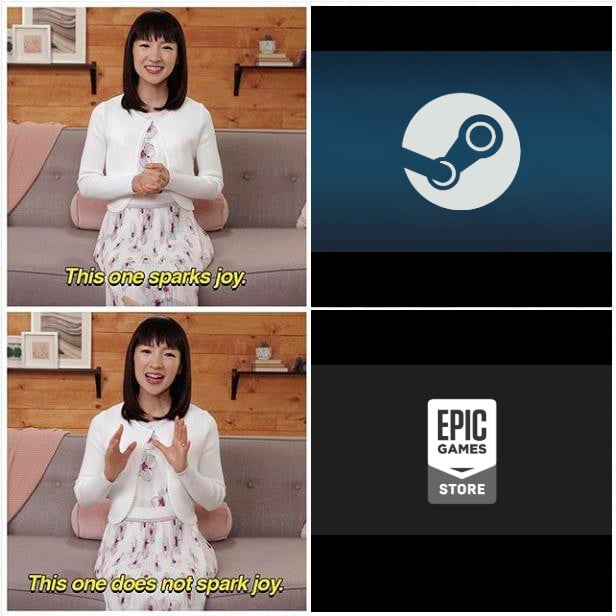
- You can draw, outline, or scribble on your meme using the panel just above the meme preview image.
- You can create "meme chains" of multiple images stacked vertically by adding new images with the "below current image" setting.
- You can remove our subtle imgflip.com watermark (as well as remove ads and supercharge your image creation abilities) using Imgflip Pro or .
Can I use the generator for more than just memes?
Yes! The Meme Generator is a flexible tool for many purposes. By uploading custom images and using all the customizations, you can design many creative works including posters, banners, advertisements, and other custom graphics.
Can I make animated or video memes?
Yes! Animated meme templates will show up when you search in the Meme Generator above (try "party parrot"). If you don't find the meme you want, browse all the GIF Templates or upload and save your own animated template using the GIF Maker.
Do you have a wacky AI that can write memes for me?
Funny you ask.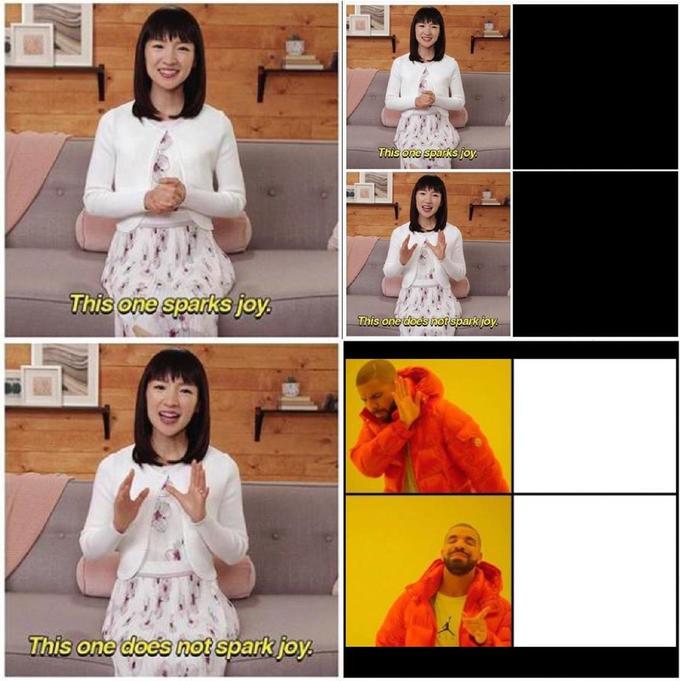 Why yes, we do. Here you go: imgflip.com/ai-meme (warning, may contain vulgarity)
Why yes, we do. Here you go: imgflip.com/ai-meme (warning, may contain vulgarity)
what it is and 6 ways to find joy in life
Joy is one of the most pleasant feelings. But sometimes it seems that there are no reasons for fun at all. What to do if apathy prevails? How to bring joy into life? It turns out that there are techniques that easily cause a feeling of satisfaction and a surge of positive emotions. We will tell you how easy it is to feel happiness and what you can change in your life.
What is joy?
Joy is a feeling of spiritual satisfaction, which is accompanied by the emergence of positive emotions and good mood. Those who often experience a sense of satisfaction are called optimists. Such people have a positive emotional background. For children, this condition is the norm, but with age we become more dissatisfied and sad, upset both with and without reason. To overcome a bad mood, it is enough to take three simple steps.
- Express inner emotion , say: “I'm glad! Wow!"
- Connect mimic .
 Usually a person experiencing a sense of satisfaction has such a portrait: eyebrows and forehead are even, the upper eyelids are in a calm state, the lower ones are raised, but not much wrinkled. The corners of the eyes are in small wrinkles, and the corners of the lips are slightly raised up. You can stand on tiptoe or cover your mouth with your hand.
Usually a person experiencing a sense of satisfaction has such a portrait: eyebrows and forehead are even, the upper eyelids are in a calm state, the lower ones are raised, but not much wrinkled. The corners of the eyes are in small wrinkles, and the corners of the lips are slightly raised up. You can stand on tiptoe or cover your mouth with your hand. - Render . It is necessary that the imagination draw a situation that evokes positive feelings - a meeting with friends, a trip to the sea, or doing what you love.
Take the test: optimist or pessimist
What happens to the body when we experience joy?
When we feel joy, brain neurons produce endorphins - "happiness hormones". Our emotional state directly depends on the level of these hormones in the blood.
How easy it is to increase their number:
- eat chocolate;
- listen to good music;
- minimize contact with negative people, do not watch the news;
- watch a comedy video or read a good joke;
- recall a funny incident from life;
- to think about good things in the near future - going to the cinema, meeting friends, etc.
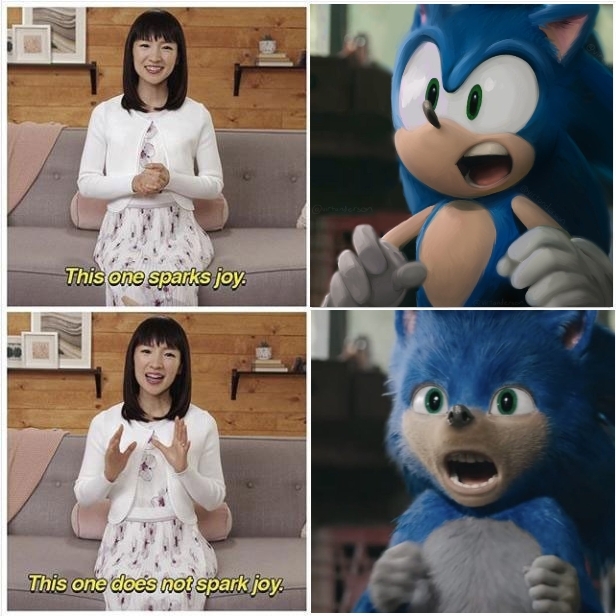
What is anhedonia?
Anhedonia is a state in which nothing pleases a person. Statistics show that most often this condition overcomes those who have achieved heights in the professional field, can afford a lot.
Why does anhedonia occur?
- the monotony of life;
- lack of physical fatigue - washing, cleaning, preparing cars;
- information flow, mental stress, lack of sleep, lack of regimen.
Feelings that there is no joy in life are the first signs of anhedonia. It can be fought with artificial stress. The essence of the method is summarized in a joke about a man who, having a grumpy wife, unpaid loans and an unloved job, wore shoes that were several sizes smaller. And when he took it off his feet, he enjoyed life like a child.
So, you can go to the countryside, abandoning the benefits of civilization, go on a diet, go to the mountains, turn off the heating, try an extreme sport. The goal is to provoke a soul-searching in order to re-experience the joy of life.
The goal is to provoke a soul-searching in order to re-experience the joy of life.
How to find joy in life?
1. Look for the joy of life in the little things.
Someone rejoices at the dawn, and someone is dissatisfied that he did not get enough sleep. One enjoys communicating with people, while the other is annoyed by empty talk.
The joy of life does not consist in something specific, it consists of joyful moments and little things that make us happy. You can create your own to-do list for the perfect day. The ones that bring us joy. Here's what you can do to make you feel good:
- eat soft, fresh bread;
- drink a cup of warm cocoa in the park, feed the pigeons;
- have a themed party;
- engage in creativity - draw, embroider, sculpt;
- cover yourself with a blanket and watch your favorite movie;
- take a bath with foam, salt, fragrances;
- revise old photographs;
- write down the ten most vivid memories from your life;
- prank friends who have a good sense of humor;
- go for a massage or other pleasant treatments.

2. Take care of your appearance.
Bring joy under the power of a beautiful manicure, a new hairstyle or stylish shoes. When we know that we look good, we involuntarily look for our reflection in the mirror. When we find it, we smile inwardly. Confidence in your external image sets you up for success and positive. In such situations, even sudden disappointments do not spoil the mood, because being sad when you look like “a brand new” is even somehow fun in Hollywood.
3. Do what you want.
It often happens that a person, having a good income and a status in society, feels completely unhappy. Why is this happening? What's wrong? The fact is that everyone has their own joys of life. And if one is delighted with fast riding a motorcycle, then another is sick of such a pastime. You need to abandon stereotypes and find "your" occupation. If spinning on one leg is uplifting and makes you smile, then why not do it?
4. Change something.
If there is no joy in life, then you need to change something - work, environment, hobbies, partner, after all. You can go on vacation, make a change or get a pet. It doesn't matter what exactly to reform. The main thing is that it evokes new emotions, desires, dreams. When we come into contact with something new, we discover another facet in ourselves.
You can go on vacation, make a change or get a pet. It doesn't matter what exactly to reform. The main thing is that it evokes new emotions, desires, dreams. When we come into contact with something new, we discover another facet in ourselves.
5. Listen to affirmations.
Affirmations are an effective therapy with which you can get rid of negativity, overcome yourself, tune in to victory. Repeating the same thoughts aloud, we begin to believe in ourselves, rethink the situation in which we are, get out of the vicious circle of depressing thoughts. The main thing is to find “your” affirmations. The ones you feel comfortable working with.
6. Help others.
By doing something good for others, we save ourselves. There will definitely be people around us who are convinced that there is no joy in their lives. Diseases, shortcomings, troubles take strength and means. When there are many reasons for sadness, depression comes to a person. A friend or just a good friend who happened to be nearby will help to cope. Why not become one? Helping others to find themselves, to find the joy of life, we ourselves are healed, receiving in return a sense of satisfaction.
Why not become one? Helping others to find themselves, to find the joy of life, we ourselves are healed, receiving in return a sense of satisfaction.
If joy is a state of mind, why not be joyful every day? It depends on us whether we are happy or not. It is enough to make your list of little things that bring pleasure. If it comes to apathy, you can apply the method of artificial stress, as well as daily in three steps to cause joy yourself. It is not difficult to learn to rejoice, the main thing is to have a desire.
Take the Temperament Test
Does that make you happy?
Save the question, "Does this make you happy?" until the moment when you get rid of unnecessary things
If there was such a thing as a decluttering guru, then Marie Kondo would definitely be one. In a word, Marie Kondo's book “Magical Cleaning. The Japanese art of putting things in order at home and in life” has changed the lives of many. In fact, I believe this book caused a global paradigm shift when it came to our relationship with employees.
Marie Kondo advised us to categorize everything we have, to take each item, and to ask the now-famous question, "Does it bring joy?" Keeping what we sincerely love and appreciate is, in fact, important, but sometimes people forget that Marie also asks in the book whether this or that belonging has fulfilled its role in our lives. As she explains, “In order to truly begin to appreciate what is important to you, you must first discard what has outlived its purpose.”
Thus, Kondo's approach includes items that we love, appreciate and at the same time those that serve a specific purpose. This can help us deal with most of the items in our home, especially if we start decluttering in unemotional places like the car or bathroom, as recommended by most experts. But what happens when we get to things that hold memories from our past or things that remind us of those we love? What do we do if it's not an expired prescription drug or a lost wooden spoon, but a thing that causes us real emotional pain?
Perhaps in this case the question should be asked: "Is this a wound that has not yet healed, or is it a scar left?"
Getting rid of "remaining scars"
Glennon Doyle said: "Write about healed scars, not about open wounds. " In other words, when we are vulnerable and decide to share something with others, it is better to imagine the painful topic from the “scar left” moment, and not from the “open wound” moment that we are still working through in our heads. Or, in the words of Brené Brown: "Share your heart, not your hurt."
" In other words, when we are vulnerable and decide to share something with others, it is better to imagine the painful topic from the “scar left” moment, and not from the “open wound” moment that we are still working through in our heads. Or, in the words of Brené Brown: "Share your heart, not your hurt."
This concept also applies to our things.
Our things have a physical weight, but often their emotional weight is much heavier. When we hold an object in our hands, as Marie Kondo suggests, we may notice that its physical weight is quite light, but the emotional weight is heavy on our mind, heart, and soul. This item reminds us of a painful part of our past or contains memories of a loved one who is no longer a part of our lives. The question is, have we dealt with this pain? It's a "healed scar" and we can think about letting it go? Or is it still an “open wound” that needs to be treated?
The best example I can give is one I heard from a man we'll call Roger. Roger, after reading my article about my rejection of the school yearbook, emailed me. He thanked me for encouraging him to let go of the painful moments of his past. Roger had a thirty-year-old Boy Scout uniform in his dustbin. Although it took up little physical space, this form weighed heavily on his mind. What was the reason? As a teenager, he was sexually abused in the same form. Every time he thought about what had happened, he was filled with anger, shame, self-blame, and great unrelenting pain. Although he told other people about the event and sought counseling, the uniform still served as a reminder of the "healed scar". After realizing that this thing was nothing more than a "scar", he threw the uniform into the trash and never thought about it again.
Roger, after reading my article about my rejection of the school yearbook, emailed me. He thanked me for encouraging him to let go of the painful moments of his past. Roger had a thirty-year-old Boy Scout uniform in his dustbin. Although it took up little physical space, this form weighed heavily on his mind. What was the reason? As a teenager, he was sexually abused in the same form. Every time he thought about what had happened, he was filled with anger, shame, self-blame, and great unrelenting pain. Although he told other people about the event and sought counseling, the uniform still served as a reminder of the "healed scar". After realizing that this thing was nothing more than a "scar", he threw the uniform into the trash and never thought about it again.
Sometimes freedom hurts
Roger did this job to cope with his pain, but he was still held back by other accessories gathering dust in the box. What collects dust in a box that is out of your sight but not out of your head? What memories whisper and remind you of yourself? Are you afraid to face them because you know that it will be too difficult to overcome the emotions associated with memories?
When it comes to our things or anything else, letting go is often difficult and painful.![]() But freedom exists on the other side of this process. Renowned minimalist Joshua Fields Millburn said, “Letting go is not always joyful, but it is always liberating. Freedom is not always fun. In fact, sometimes freedom is painful.” I would add to these words: "Freedom can be painful, but it's still freedom." Being free is much better than holding on to the fear and pain we fear to face. Because, as Richard Rohr said, "If we don't transform our pain, we certainly transmit it."
But freedom exists on the other side of this process. Renowned minimalist Joshua Fields Millburn said, “Letting go is not always joyful, but it is always liberating. Freedom is not always fun. In fact, sometimes freedom is painful.” I would add to these words: "Freedom can be painful, but it's still freedom." Being free is much better than holding on to the fear and pain we fear to face. Because, as Richard Rohr said, "If we don't transform our pain, we certainly transmit it."
Until the painful memories and things around us are processed, we will remain trapped in this pain or even project it onto the people we love. Painful memories can be overcome and dealt with by talking to a therapist and acknowledging that we are holding on to something that is a “long-healed scar.”
Heal your wounds, overcome pain from the past, live in the present day
Although Marie Kondo is best known for asking “Does this make you happy?”, one of the most insightful parts for me in Magical Cleaning.




